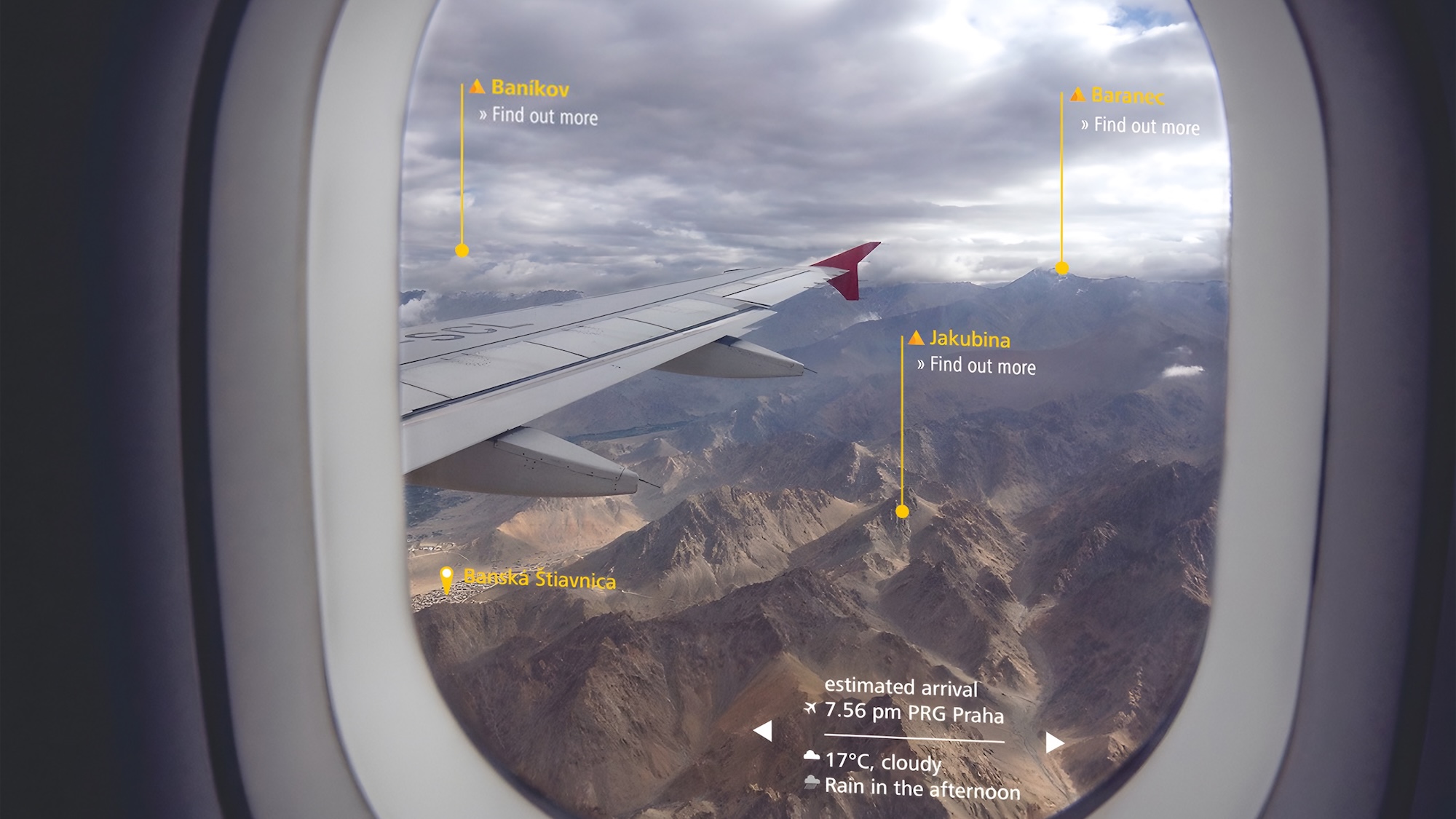The optical systems company Zeiss has supplied NASA and the ESA with high-grade glass components for years, including lenses for the James Webb Space Telescope and lunar cameras for the Apollo astronauts. For its next generation of products, the German company is eyeing airplanes instead of spacecraft. According to an announcement earlier this month, Zeiss wants to upgrade commercial jets with touch-free holographic Multifunctional Smart Glass systems.
The new technology is on display from April 8-10 during the Aircraft Interiors Expo 2025 in Hamburg, Germany. The company wants to move beyond the showroom floor and into more planes within the coming years.
To create transparent glass like an airplane window, Zeiss relies on a combination of micro-optical structures and holographic optical components, depending on the need. This may take the form of windows that display flight information, geographical orientation, and moving maps for commercial plane passengers. Smart glass panes–instead of opaque cabin section dividers–could also become interactive digital surfaces through the use of touchless holographic “buttons” that respond to motion using ultraviolet- and infrared-based sensors.
However, one of the system’s biggest features isn’t seen—it’s felt. According to Zeiss, swapping out existing heavy physical dividers and bulky display tools with multifunctional smart glass can cut down on a plane’s overall weight. The lighter the plane, the less fuel it generally uses, leading to cheaper overall operating costs and less pollution.
Zeiss isn’t restricting its holographic smart glass to airplane cabins, either. The company is already testing augmented reality HUD cockpit displays that reduce the need for pilots to look away from their surroundings. To accomplish this, the smart glass relies on infrared and microwave camera sensors to capture environmental data and transmit them directly onto a pilot’s field of vision.
“The multiple detection systems help pilots, crew and (semi-)automated assistance systems monitor various tasks inside and outside the aircraft,” the company explains on its website.
The technology could serve as an invaluable tool during low-visibility situations such as evening flights, fog, and inclement weather. Future uses could also include turning an entire cockpit window into a single, augmented reality HUD display. Doing so may also minimize collision risks, as well as unnecessary holding patterns and flight diversions.



